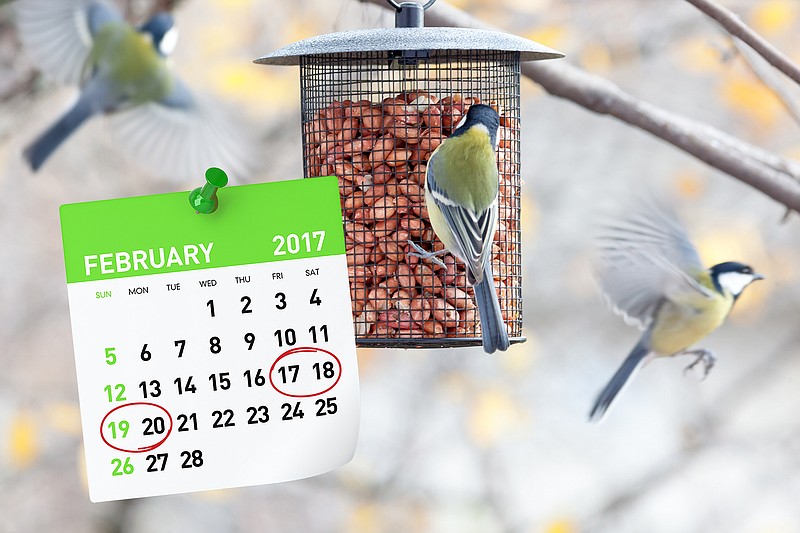Common Feeder Birds
Tufted titmouse (Baeolophus bicolor)Downy woodpecker (Picoides pubescens)Eastern towhee (Pipilo erythrophthalmus)House finch (Haemorhous mexicanus)Northern cardinal (Cardinalis cardinalis)Uncommon Feeder BirdsPurple finch (Haemorhous purpureus)Evening grosbeak (Coccothraustes vespertinus)Fox sparrow (Passerella iliaca)Pine siskin (Carduelis pinus)Hermit thrush (Catharus guttatus)
The Great Backyard Bird Count is a citizen science-based project co-sponsored by the Cornell Lab of Ornithology, the National Audubon Society and Bird Studies Canada.
This year, the bird count takes place Feb. 17-20. During that time, participants from all over the world commit to bird-watching for a minimum of 15 minutes per day and recording the numbers and species spotted at their backyard feeders.
Then, these checklists are uploaded onto a worldwide database. Ornithologists across the globe use that information to better understand migratory patterns, fluctuations in populations, the effects of climate change and more.
Want to get in on the avian action this month?
First, set up your free online e-bird account at ebird.org. Then set up your backyard to attract an optimal amount of birds. Here's how:
» Include a variety of feeders. For example, tube feeders appeal to a wide range of birds and can be filled with any-sized seed. Mesh feeders will accommodate birds that cling rather than perch, such as woodpeckers. Bowl feeders are best for species that prefer to feed on flat surfaces, such as towhees or doves.
» Include a variety of feeds, too. Foods with high fat or oil contents - such as raw peanuts, pecans, black oil sunflower seeds, safflower or suet, made from animal fat - are particularly beneficial during winter months. Other feeder-favorites include dried meal worms, peanut butter, fresh fruit and corn.
» Be sure to include several fresh water sources. Birds can have a difficult time finding unfrozen water during winter months.
